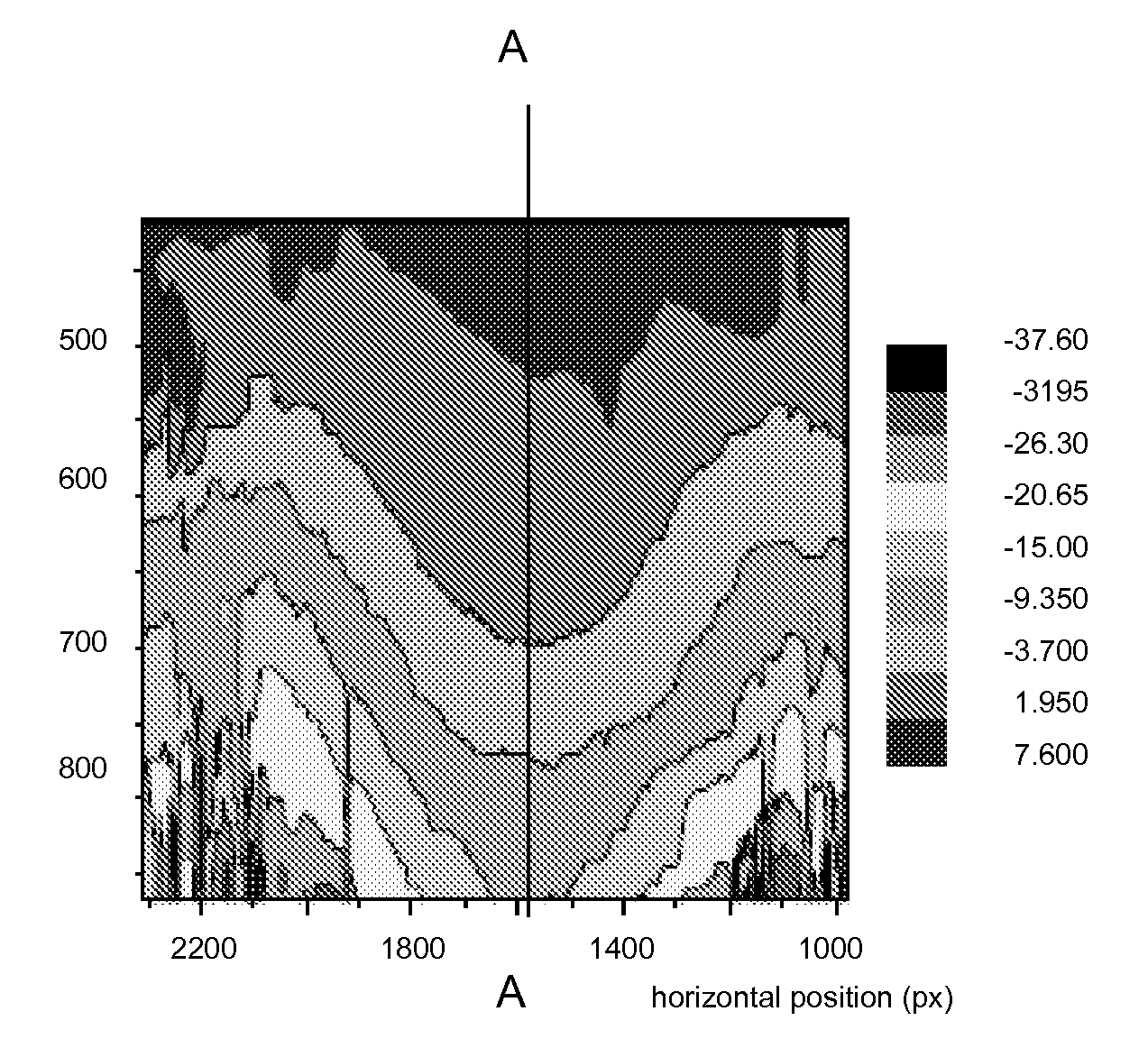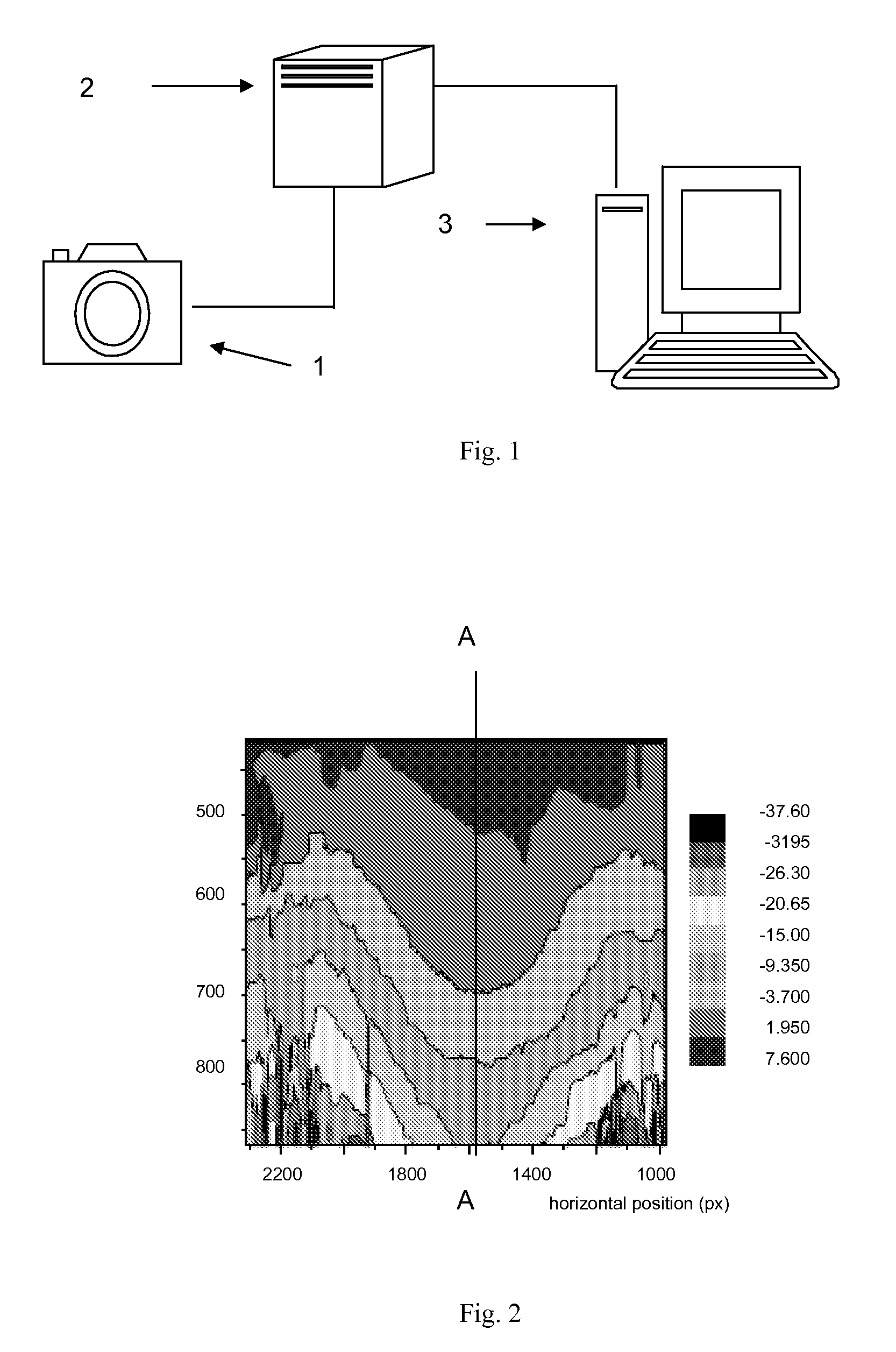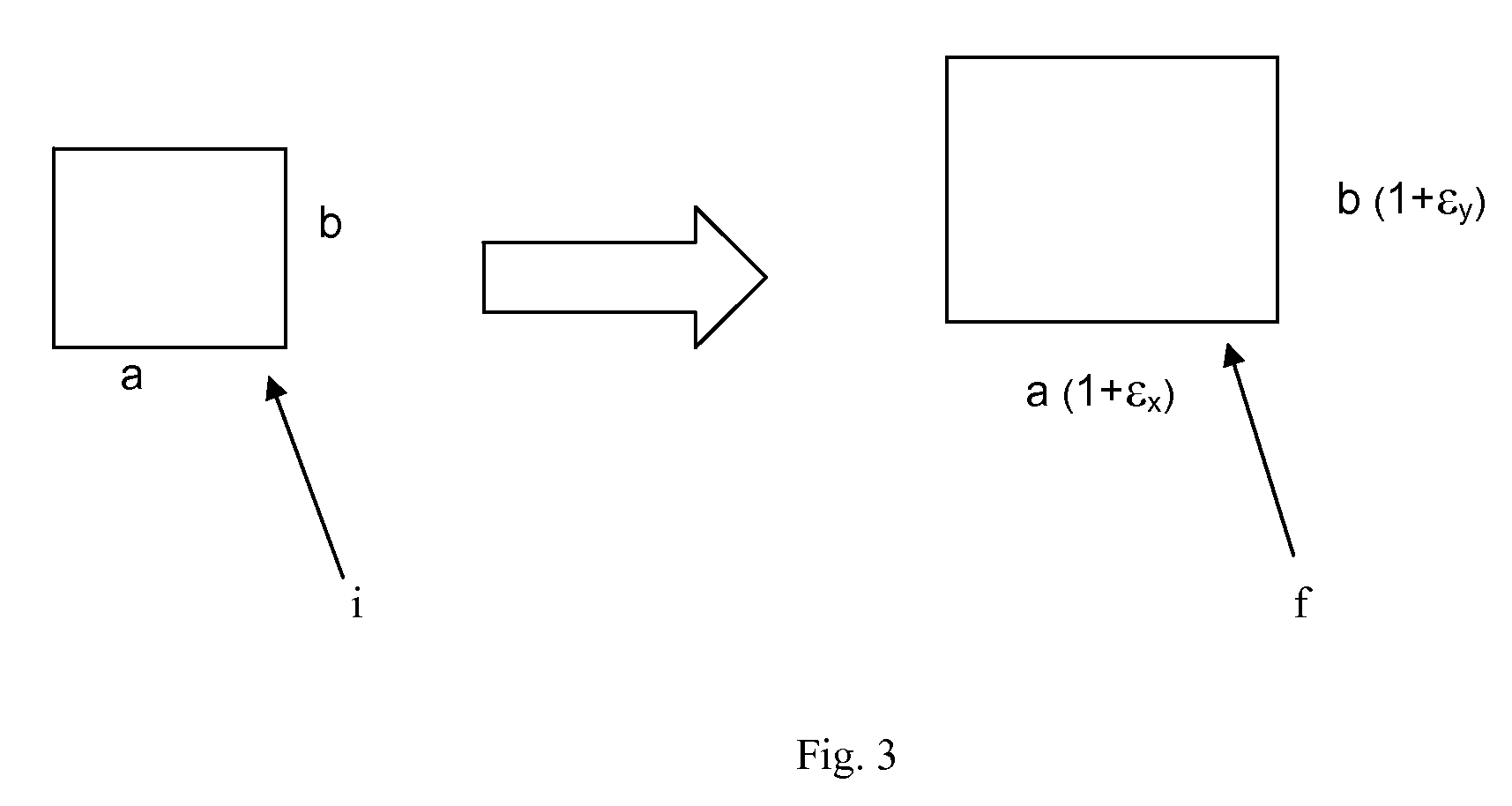Evaluation Of Immediate-Effect Skin Molding Agents Using DISC
- Summary
- Abstract
- Description
- Claims
- Application Information
AI Technical Summary
Benefits of technology
Problems solved by technology
Method used
Image
Examples
example 1
Skin Stretch / Shrink and Material Behavior
[0041]In this example, we focus on an area of the forearm. During the procedures, a device was used to hold the forearm in a fixed position. The experimental setup was first calibrated by running trials on untreated skin. Skin-molding, film-forming polymers were uniformly applied on a flat framed region (typically, 4×4 cm or 3×3 cm) of the forearm.
[0042]Images were acquired at defined intervals of the drying process (i.e. one minute intervals over a five to seven minute period). Experiments may be repeated to ensure accuracy. The acquired images were aligned using Mirror software (Canfield) to enable the center of the sample to be stationary and to eliminate the rotational and lateral movements of the forearm that may have occurred during the experiment. The DISC analysis was then performed on the aligned images. DISC correlates the images of the undeformed and deformed skin, subset by subset and generates a vector displacement map (see FIG. ...
example 2
Skin Stiffness
[0047]A modified technique according to the present invention is now described. This experiment focused on the back on the hand. The skin was deformed laterally using a very small probe (from Gas Bearing Electrodynamometer (GBE)) attached to the skin at the center of a defined square (1 cm 2). The skin surface contacted by the probe was a few square millimeters. The probe is capable of moving with a lateral, reciprocating action. Photographic images were acquired before and during deformation of skin, treated with (Polylift® from Rita Corporation). Non-treated skin was tested, as a control. The experiment was repeated three times for untreated skin and for skin with polymer.
[0048]Using DISC as described herein, the distribution of the skin displacement along a vertical axis was acquired and the value of maximum skin displacement can be correlated to skin stiffness. From one skin-deforming agent to another, the resulting skin stiffness can be compared by comparing the v...
example 3
Compatibility of Skin Molding Agent and Cosmetic Foundations
[0050]The following demonstrates the technique of present invention as a tool for qualifying the interaction between a skin molding agent and a cosmetic foundation and answers the question, “Is it better to apply the foundation above or below the skin molding agent?” The skin molding agent in this test was the polymer blend shown in table 2.
TABLE 2Skin Molding FormulaPolymer Blend Skin Molding FormulaPercentdisodium edta0.120potassium sorbate0.150water / hydrolyzed keratin2.400PVP4.000butylene glycol / ammonium acrylates copolymer / 4.000C11-C15 pareth-7 / sodium laureth-12 sulfatealgin0.400glycerine0.500acrylates copolymer4.000Phenoxyethanol0.900citric acid0.075methylmethacrylate crosspolymer0.500polyaminopropyl biguanidine0.100ammonium acrylodimethyltaurate / VP copolymer0.750water82.105
Experimental Procedure:
[0051]All experiments were performed in vivo on a 2×2 cm surface of the forearm. The forearm was maintained stationary as mu...
PUM
 Login to View More
Login to View More Abstract
Description
Claims
Application Information
 Login to View More
Login to View More - R&D
- Intellectual Property
- Life Sciences
- Materials
- Tech Scout
- Unparalleled Data Quality
- Higher Quality Content
- 60% Fewer Hallucinations
Browse by: Latest US Patents, China's latest patents, Technical Efficacy Thesaurus, Application Domain, Technology Topic, Popular Technical Reports.
© 2025 PatSnap. All rights reserved.Legal|Privacy policy|Modern Slavery Act Transparency Statement|Sitemap|About US| Contact US: help@patsnap.com



